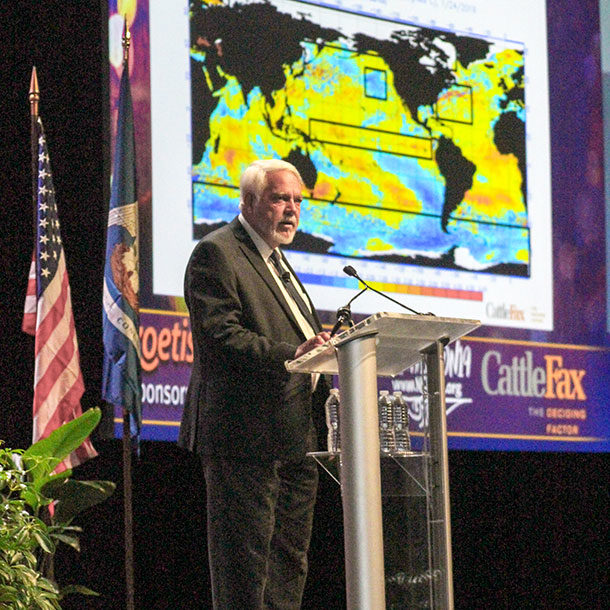World outlook
The drought conditions in Brazil are projected to stay strong, while the drought in Argentina has eased since last year. Douglas anticipated a strong crop year for Argentina, while Brazil will not be producing record crops this year. “The main concern that I have is that El Nino favors keeping it wet in Argentina and dry in Brazil,” Douglas said. “I think we’re really going to have to watch what’s going to go on in that cropland; it’s very important because China is looking at that crop, because they’re planning on importing the soybeans out of South America as opposed to buying them from the U.S.”
One of the current major world concerns is the drought in Australia, which is not projected to end soon. This is currently Australia’s summer rainy season, but in the last 90 days, they have received a fraction of the precipitation they would normally get. According to Australia’s vegetation health index, much of the vegetation indices are running at 10 percent of normal, showing little to no improvement from the summer rainy season. He predicted their drought conditions will last through their planting season and into the late fall.
U.S.
In common El Nino fashion, the Southeast has been wetter than normal, but contrary to the classic El Nino pattern, Mexico has been drier than normal.
The major drought that has plagued the Southern Plains will migrate west to the Great Basin, but won’t stay for long. Douglas said the storm pattern will soon break to bring rain back to the West Coast. Those storms will eventually travel east to the Southern Plains, cutting short the drought in the Great Basin and returning moisture levels to normal in the Southern Plains.
He said overall, precipitation across the U.S has been running at roughly 120 to 140 percent from Texas to the Carolinas and running north to the Canadian border. Douglas said wet conditions in the Southeast in 2018 and the storms sweeping from California west to Texas will result in better growing conditions for crops and rangeland for the southern half of the U.S. and Mexico compared to last year.
Spring and summer 2019
Mild conditions are expected to return to the northern tier of states after a cool end to the winter. The southern tier of states will be wet as El Nino conditions continue to fuel a strong subtropical jet stream out of the Pacific and into the Gulf of Mexico. The dry spring in the Corn Belt needs to be closely watched, as the dry conditions are likely to persist into the summer. This will mean a dry planting season followed by a dry summer, but Douglas doesn’t anticipate that it will make a negative impact on crop performance in the Corn Belt this year. ![]()

-
Carrie Veselka
- Editor
- Progressive Cattleman
- Email Carrie Veselka
PHOTO: Weather expert Art Douglas has been giving the annual CattleFax long-range weather outlook for 42 years. Photo by Joy Hendrix.








